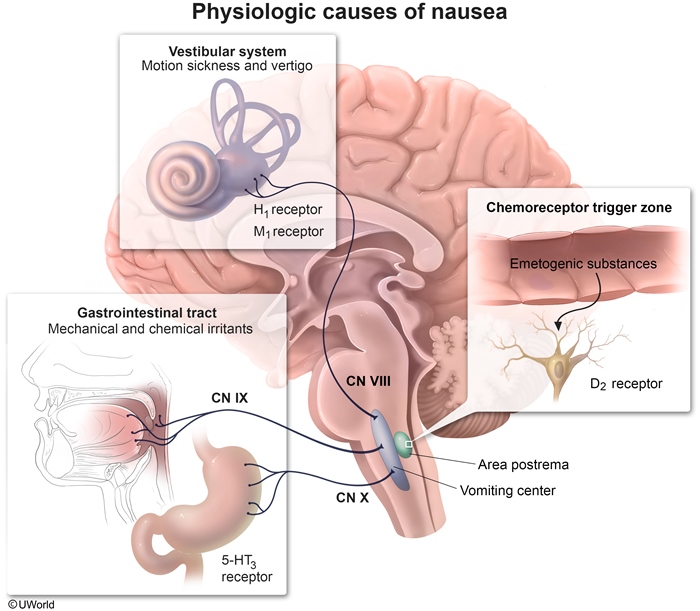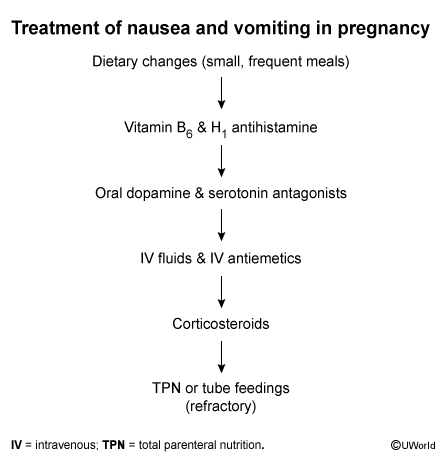Antiemetics
Article Sections
Introduction
Antiemetics are medications used to prevent or alleviate nausea and vomiting, which can result from a variety of causes, including chemotherapy, postoperative states, vestibular dysfunction, gastrointestinal irritation, CNS pathology, and pregnancy. Antiemetic drugs act on a variety of receptors involved in the emetic reflex arc. These receptors include serotonin 5-hydroxytryptamine type 3 (5-HT3), dopamine type 2 (D2), histamine type 1 (H1), muscarinic acetylcholine (M1), and neurokinin-1 (NK1) receptors. Identifying the underlying cause of nausea and vomiting helps in the selection of antiemetic therapy.
Pathophysiology
Nausea and vomiting are coordinated reflexes involving complex interactions between the gastrointestinal system and the CNS. Neuroanatomic structures involved in nausea and vomiting include the following (Figure 1):
- Chemoreceptor trigger zone (CTZ): Located in the
Continue Learning with UWorld
Get the full Antiemetics article plus rich visuals, real-world cases, and in-depth insights from medical experts, all available through the UWorld Medical Library.
Figures

